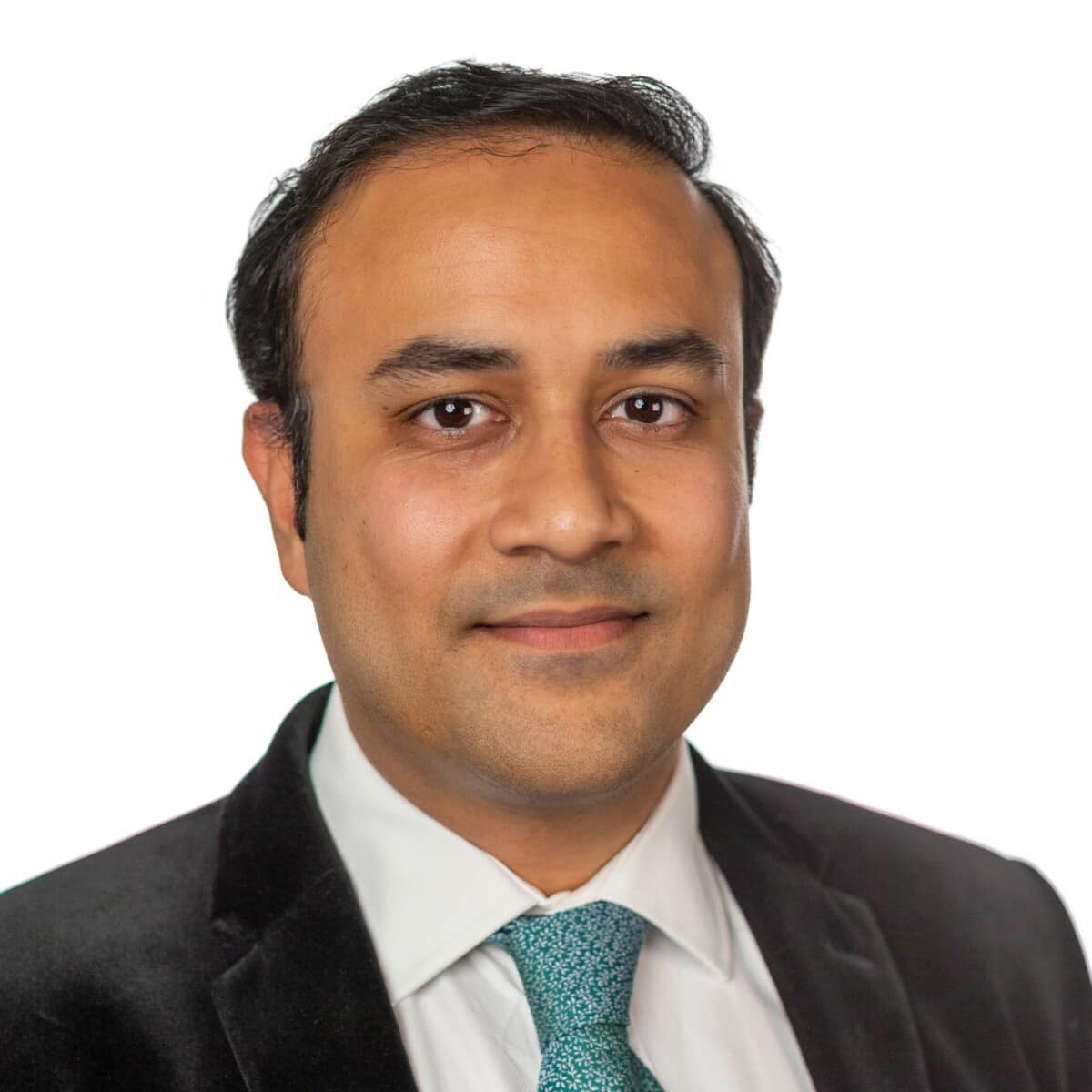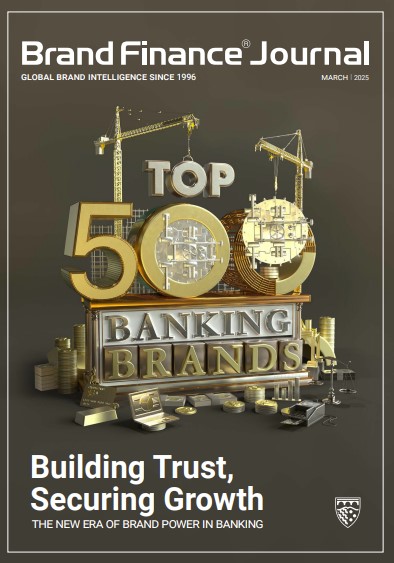This article was originally published in the Brand Finance Banking 500 2025 report

Valuation Director, Brand Finance
The Middle East banking sector is defined by two characteristics: opportunity and stability.
The Middle East’s role as a key intermediary between East and West is boosting the region’s banking sector’s growth and global relevance. Positioned at a trade and investment crossroads, Middle Eastern banks benefit from capital inflows, cross-border partnerships, and investor confidence. Sovereign wealth funds and economic diversification in the region, are driving expansion beyond oil wealth, while diplomatic influence is enhancing stability, making the region’s banks attractive global partners.
A key opportunity in the region lies in fintech. Only 17% of consumers in the Middle East use digital banking, according to The International Monetary Fund, compared to nearly 60 percent of consumers in the U.S. Investors see the opportunity, and fintech attracts about a third of the region’s venture funding. In parallel, traditional banking metrics indicate stability, bolstered by high oil prices, the implementation of European regulations that aim to build industry resilience, and greater government influence than other regions, including sovereign support.
This balance of opportunity and stability is reflected in steady but moderate brand value growth for banks in the Middle East. In the past year, the average increase in brand value for Middle Eastern banks was 10%, contributing to an overall 13% increase in total brand valuation for Middle Eastern brands included in the Banking 500 2025. While currently representing just under 4% of total brand value of the top 500 banks, the sector is maturing.
A key indicator of this maturity is the increase in brand value as a percentage of market capitalisation, which now stands at 11%, up from 10% in 2024. This growth reflects greater emphasis on brand building in the region - as competition intensifies, banks are recognising the importance of strong branding to differentiate themselves.
Saudi Arabia is the frontrunner in Middle Eastern banking brand value expansion, with a 17% year-on-year growth. This growth underscores the country’s economic momentum, fuelled by Vision 2030 initiatives, a strong push towards diversification, and increased investment in the financial sector. As Saudi banks continue to evolve, their focus on digitalisation and customer-centric solutions is key to growth in the highly competitive market.
The UAE’s banking sector is also thriving, with the ten ranked banks growing 14% year-on-year. Nine out of ten UAE banks included in the ranking posted double-digit increases in brand value.
Qatar’s seven banking brands included saw a collective 6% growth, while Kuwait’s six banks grew by 8%.
QNB leads as the Middle East’s most valuable banking brand
QNB is the middle East’s most valuable banking brand with a brand value of USD9.4 billion, an 11% increase year-on-year. QNB’s Brand Strength Index score has also increased to 86.25/100 with AAA brand rating. The bank reported a record net profit for the 2024 financial year, driven by strong operational performance and strategic expansion. QNB’s cost-to-income ratio stood at 22.3%, one of the most efficient among large financial institutions in the MEA region.
Domestically, QNB continues to play a crucial role in Qatar’s economic development, particularly in corporate banking. QNB is supporting the multibillion-dollar North Field Expansion project, financing initiatives across the entire value chain, from liquefied natural gas (LNG) storage tanks and tankers to refining and downstream capacity expansion. Internationally, Saudi Arabia presents a key growth market, with QNB strengthening its presence by opening a second branch in Jeddah. The bank is also investing in its international branches in London, Paris, Singapore, and Hong Kong, as QNB aims to balance regional strength with international expansion.
Al Rajhi remains the region’s strongest banking brand
Al Rajhi remains the strongest banking brand in the region with a BSI of 87.9 out of 100 and AAA brand rating. Al Rajhi has a dominant market share in Saudi Arabia and has successfully adapted to the digital era, with 94% of its total banking transactions conducted digitally in 2023.
Al Rajhi has heavily invested in technology to enhance digital solutions and streamline the user experience. Its focus includes expanding group-wide digital capabilities, customer-centric journeys, and real-time marketing. To accelerate digital transformation, the bank leverages support businesses to boost automation, efficiency, and cloud-based scalability while centralising operations under its 'Harmonize the Group' strategy. Its fintech portfolio includes Neoleap (payment solutions), Emkan (digital finance), and the successful URPay digital wallet, further expanding its presence in the fintech space.
Brand Finance’s research, in Saudi Arabia, found that Al Rajhi enjoys exceptionally high brand awareness, with 100% of respondents aware of the brand and 99% familiar with it. Beyond recognition, 76% of consumers reported having recently discussed the brand, while 58% identified it as their preferred bank. Al Rajhi also leads the market across key metrics, including reputation, engagement, ability to meet customer needs, and recommendation.
Innovation and digitalisation: the changing face of Middle Eastern banking
Digital innovation is shaping the future of Middle Eastern banking as banks race to incorporate technological advancements, enhance customer experience and operational efficiency, and increase their market shares.
As fintech hubs gain momentum, regional rivalries are emerging - Dubai and Abu Dhabi are competing to become the UAE’s premier fintech hub, while Riyadh is establishing itself as a key player in Saudi Arabia. Consumer preferences are also mirroring rollouts in Europe, such as with increased adoption of mobile wallets, financial inclusion initiatives, and the introduction of open banking.
Regulatory Shifts and Market Consolidation
Regulatory developments continue to influence market dynamics, with Basel III implementation set to be finalised by 2026, slightly later than Europe’s January 2025 deadline. Basel III has prompted further market consolidation, as smaller banks facing more challenging capital requirements merge with larger institutions.
Compared to other markets, Middle Eastern banks operate within a regulatory framework that is heavily shaped by government policies and economic strategies. This governmental influence fosters stability and long-term growth, but introduces unique challenges in balancing innovation with compliance.
The road ahead
As Middle Eastern banks strengthen their brand equity, embrace digital transformation, and adapt to an evolving regulatory landscape, the sector is set for sustained growth. With strong government support and a maturing market, regional financial institutions are not only keeping pace with global banking trends but also setting new benchmarks in innovation and customer experience, solidifying their presence locally while expanding their global influence.

